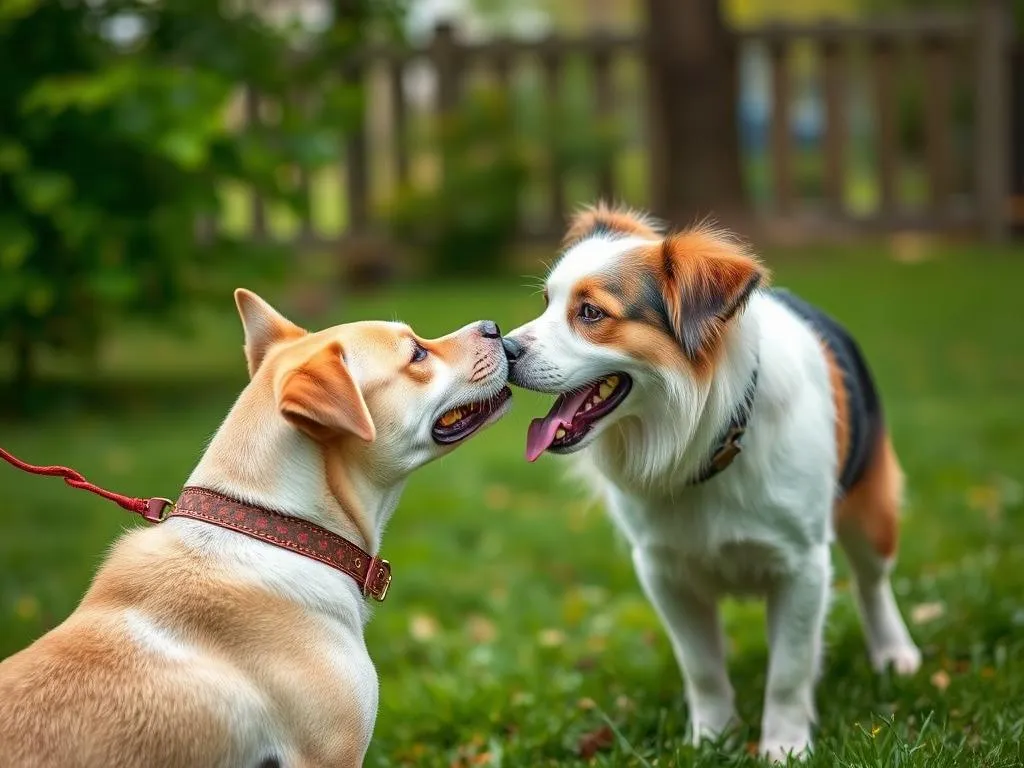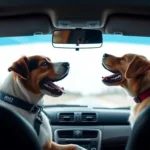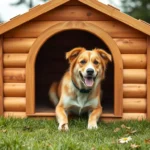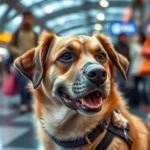
Introduction
Socialization is a critical aspect of a dog’s life, influencing their behavior and interactions. Teaching your dog to greet other dogs calmly not only enhances their social skills but also contributes to a more enjoyable experience for both the dog and their owner. Unfortunately, many dogs struggle with excitement or anxiety during meetings, leading to undesirable behaviors that can create tension and discomfort.
The benefits of teaching calm greetings are numerous. A well-socialized dog is less likely to show aggression, fear, or overly exuberant behavior. It fosters a sense of confidence in your dog and can help prevent future behavioral issues. This article will cover essential methods, including understanding dog behavior, preparing for training, step-by-step techniques, troubleshooting common issues, and the importance of ongoing socialization.
Understanding Dog Behavior
Canine Communication
To effectively teach a dog to greet other dogs calmly, it’s essential to understand how dogs communicate with each other. Dogs use body language to express their feelings and intentions. Common signals include:
- Tail wagging: A wagging tail can indicate excitement, but the speed and direction can reveal much more. A relaxed wag can show friendliness, while a stiff, high wag may indicate arousal.
- Posture: A dog standing tall with ears perked up may be feeling confident, while a lowered body posture can signal submission or fear.
- Facial expressions: Relaxed facial muscles and a slightly open mouth can indicate a friendly demeanor, while a tense face may suggest discomfort or aggression.
Understanding these signals is crucial for interpreting your dog’s feelings during interactions.
Reasons for Overexcitement
Several factors can lead to overexcitement when dogs meet each other:
- Fear and anxiety: Some dogs may react excitedly due to fear, often misinterpreted as aggression or overly boisterous behavior.
- Lack of socialization: Dogs that haven’t been adequately socialized may not know how to behave appropriately during greetings.
- Overexcitement or playfulness: Some dogs are naturally more exuberant and may need guidance in controlling their excitement.
The Role of the Owner
A dog’s behavior can often mirror that of its owner. If you exhibit anxiety or excitement, your dog may pick up on those cues. To foster calmness, owners should practice techniques to model a calm demeanor, such as deep breathing, relaxed body language, and maintaining a steady voice.
Preparing for Training
Choosing the Right Environment
The first step in training your dog to greet others calmly is selecting the right environment. Ideal locations include:
- Quiet parks: Areas with fewer distractions allow dogs to focus during training sessions.
- Home: Practicing with familiar dogs in a controlled setting can ease anxiety.
Minimizing distractions is essential in the early stages of training, as it helps your dog concentrate on the task at hand.
Essential Equipment
Before starting training, ensure you have the necessary equipment, including:
- Leashes and collars: A standard leash helps maintain control during greetings.
- Treats and toys: Positive reinforcement is vital; have a supply of treats or toys ready to reward your dog for calm behavior.
Assessing Your Dog’s Readiness
Recognizing when your dog is ready for training is crucial. Signs of readiness include:
- Calm demeanor at home: If your dog can relax in familiar environments, they are more likely to handle new situations well.
- Curiosity about other dogs: A willingness to engage with other dogs, without signs of fear or aggression, indicates readiness.
If your dog shows persistent fear or aggression, it may be best to seek professional help.
Step-by-Step Training Techniques
Teaching Basic Commands
Before introducing your dog to other dogs, ensure they understand basic commands like “sit” and “stay.” These commands lay the foundation for more complex behaviors and help in managing excitement during greetings.
To teach these commands effectively:
- Use treats to encourage desired behaviors.
- Be consistent with commands and rewards, ensuring your dog understands what is expected.
Gradual Exposure to Other Dogs
Once your dog has mastered basic commands, gradually expose them to other dogs. Start with controlled meetings with calm, well-socialized dogs.
- Distance matters: Begin at a distance where your dog feels comfortable and gradually decrease it as they show calm behavior.
- Monitor your dog’s body language for signs of stress or overexcitement, and adjust accordingly.
Reward-Based Training
Using treats and praise effectively is vital for reinforcing calm behavior.
- Timing of rewards: Reward your dog immediately when they exhibit calm behavior, reinforcing the positive action.
- Avoid mistakes: Don’t reward excitement; instead, wait for calmness before giving treats or praise.
Practicing Calm Greetings
The “meet and greet” method is a structured approach to teaching calm greetings.
- Approach another dog slowly, ensuring both dogs are calm before allowing them to meet.
- Maintain a calm demeanor; your energy will influence your dog.
Redirecting Attention
If your dog starts to get overly excited, redirect their attention to you using commands or games.
- Games: Playing simple games or using toys can help keep your dog focused and calm during greetings.
Troubleshooting Common Issues
Overreactions During Greetings
If your dog shows signs of overreaction, such as barking or lunging, it’s crucial to remain calm and assertive.
- Signs of overreaction: Look for signs like stiff body posture or raised hackles.
- What to do: Step back and create distance until your dog has regained their composure.
Fearful Responses
Handling a fearful dog requires extra patience. Signs of fear include cowering, hiding, or excessive barking.
- Gradual desensitization: Slowly expose your dog to other dogs from a distance, rewarding calm behavior.
Consistency in Training
Consistency is key to effective training.
- Regular practice: Schedule daily or weekly training sessions to reinforce teachings.
- Training schedule: A structured routine helps your dog understand what to expect.
Socialization Beyond Greetings
Importance of Ongoing Socialization
Regular interactions with other dogs are essential for long-term behavior. This not only reinforces your dog’s training but also helps them adapt to various social situations.
Group Classes and Playdates
Organized classes and playdates can provide valuable socialization opportunities.
- Benefits of classes: Professional guidance can help address specific behavioral issues and promote calm interactions.
- Safe playdates: Arrange playdates with well-mannered dogs, ensuring a positive experience for all involved.
Signs of Successful Socialization
To assess if your dog is improving, look for signs of successful socialization:
- Calm interactions: Observe if your dog is able to greet other dogs without excessive excitement.
- Confidence: A confident dog will approach other dogs willingly, showcasing their growth.
Conclusion
Teaching your dog to greet other dogs calmly is a rewarding journey that requires patience, consistency, and understanding. By focusing on proper training techniques and ongoing socialization, you can foster positive behaviors that enhance your dog’s social skills. Remember to celebrate small victories along the way, and enjoy the many benefits of having a well-adjusted, calm dog.
FAQs
-
What if my dog continues to show aggression during greetings?
If your dog displays aggressive behavior despite training, consider consulting a professional trainer or behaviorist for tailored guidance. -
Can I train an older dog to greet calmly?
Absolutely! While it may take more time and patience, older dogs can learn new behaviors with consistent training. -
How long will it take to teach my dog to greet calmly?
Training duration varies; some dogs may learn quickly, while others require more time. Regular practice is essential for success.









